What are Bryophytes?
Bryophytes are simple, non-vascular plants that include mosses, liverworts, and hornworts. Unlike vascular plants, they lack specialized tissues for transporting water and nutrients. They are small in size, typically growing in moist environments like forests, swamps, and rocks. Bryophytes consist of around 20,000 plant species. Bryophytes reproduce via spores and have a life cycle with alternating generations: a gametophyte stage and a sporophyte stage. The gametophyte is the dominant phase, producing gametes (eggs and sperm) in specialized structures. When Fertilization occurs, it forms a sporophyte, which remains attached to the gametophyte and produces spores. Bryophytes play important ecological roles, such as soil stabilization, moisture retention, and habitat provision, and are often found in ecosystems worldwide.




Habitat of Bryophytes
Bryophytes, like mosses and liverworts, are small plants that thrive in damp environments. They can be found in various habitats, from forests to wetlands, and even in urban areas. Bryophytes prefer places with plenty of moisture, such as near streams, ponds, or shaded areas where water is abundant. You might spot them clinging to rocks, growing on Soil, or covering tree trunks. Because they lack true Roots, stems, and leaves like other plants, they rely on moisture to absorb nutrients and reproduce. Their simple structure allows them to adapt to different habitats, making them common in many ecosystems around the world. Whether in lush rainforests or urban parks, bryophytes play an important role in maintaining ecological balance by providing habitats for various organisms and contributing to soil health.
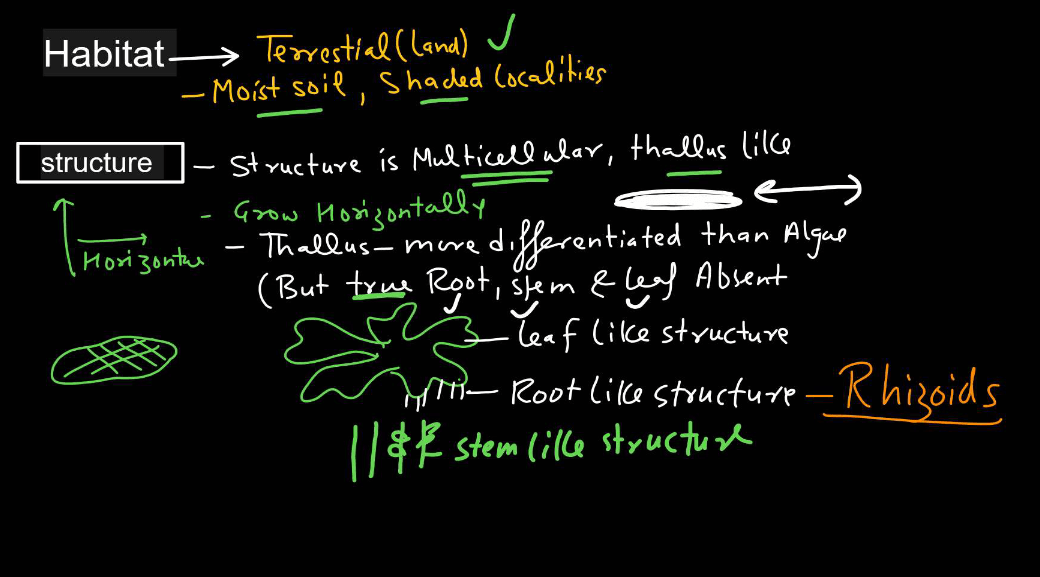
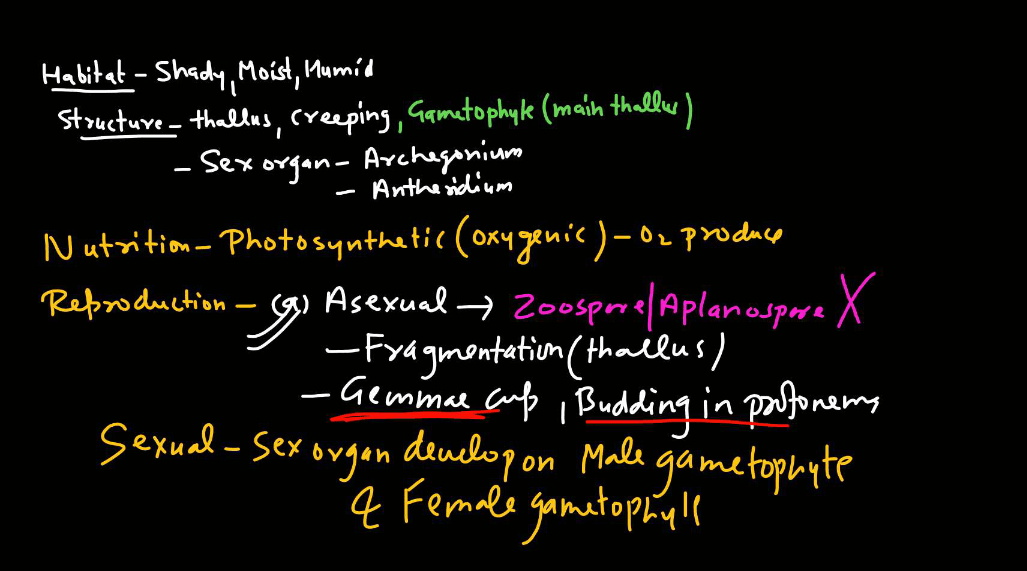
Characteristic Features of Bryophytes
Bryophytes are small, simple plants without true roots, stems, and Leaves. In simple terms, bryophytes are small plants that don’t have roots like trees, rely on water for Reproduction, and are crucial for maintaining the environment. Here are their key characteristics:
- Non-Vascular: Bryophytes lack specialized tissues for transporting water and nutrients, so they rely on diffusion and osmosis.
- Small Size: They are generally small in size, often forming low mats or cushions on the ground or on rocks.
- Moisture Dependence: Bryophytes need water for reproduction because they produce sperm Cells that swim to reach egg cells.
- Haploid Dominance: The dominant phase of their life cycle is haploid, meaning they spend most of their life cycle in the haploid (one set of chromosomes) state.
- Reproduction: They reproduce via spores, which are produced in structures called Sporangia.
- Ecological Role: Bryophytes play essential roles in ecosystems by stabilizing soil, retaining water, and providing habitat for other organisms.
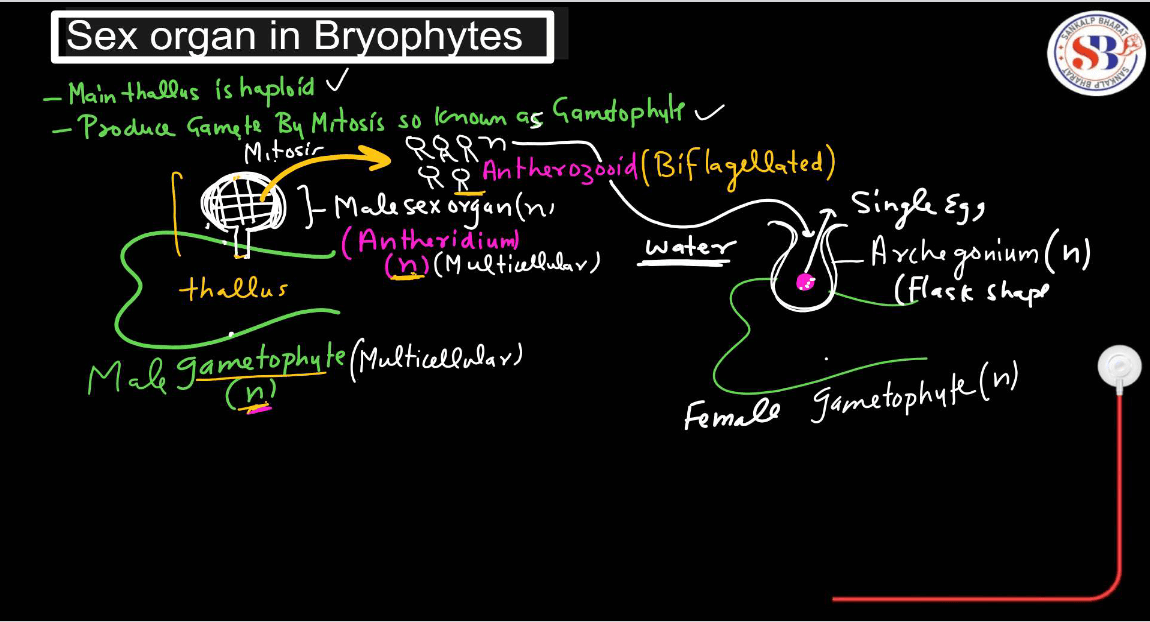
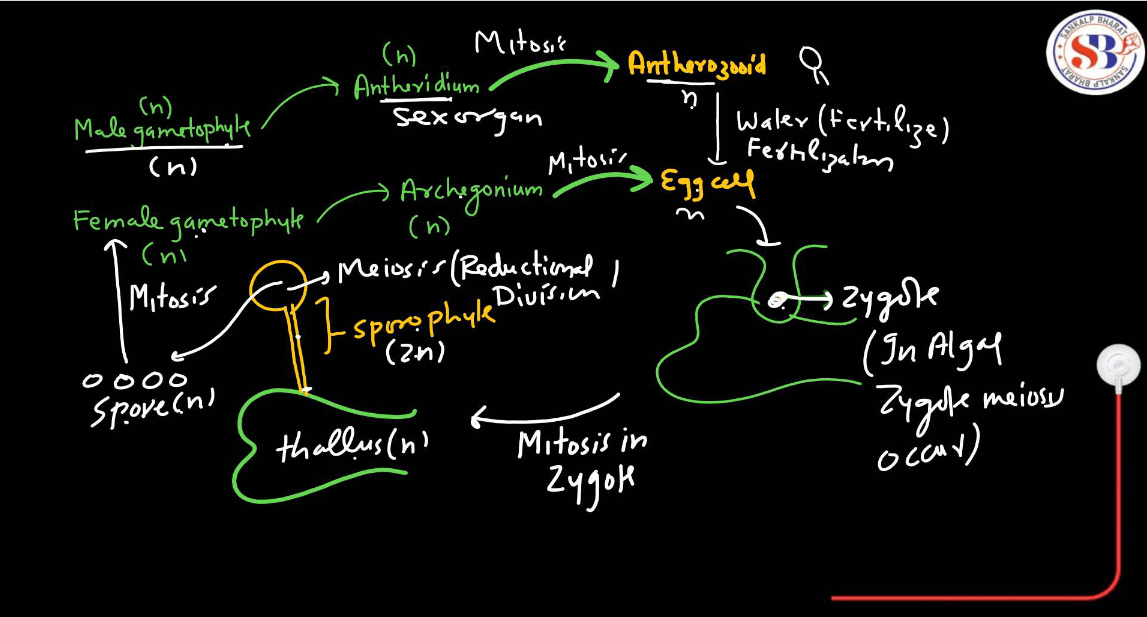
Classification of Bryophytes
Bryophytes are classified into three main groups namely: Bryopsida, Marchantiophyta, and Anthocerotophyta. All these three groups make up the main classification of bryophytes, each with its own unique characteristics and ecological roles.
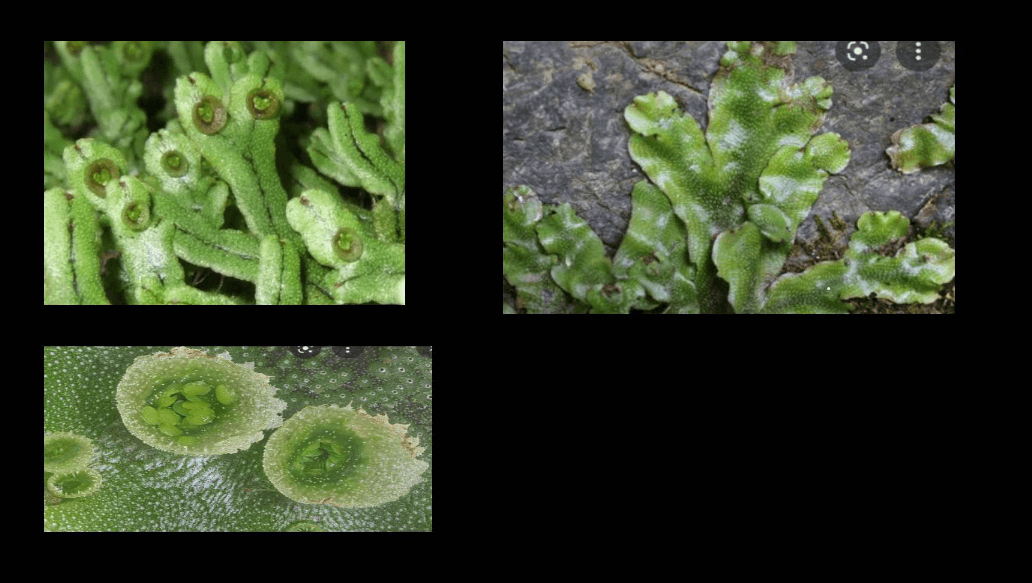
| Classification of Bryophytes | |
| Types | Description |
| Bryopsida (Mosses) | Mosses are the largest group of bryophytes and are found in diverse habitats worldwide. They typically grow in moist environments and are characterized by small, leafy structures called gametophytes. Mosses reproduce via spores. |
| Hepaticopsida (Liverworts) | Liverworts are another group of bryophytes that are another group of bryophytes that are found in various habitats, ranging from moist forests to deserts. They are characterized by flattened, ribbon-like structures called thalli. Liverworts reproduce both sexually and asexually. |
| Anthocerotopsida (Hornworts) | Hornworts are less common than mosses and liverworts. They are named for their horn-shaped sporophyte structures. Hornworts typically grow in damp environments and reproduce via spores. |
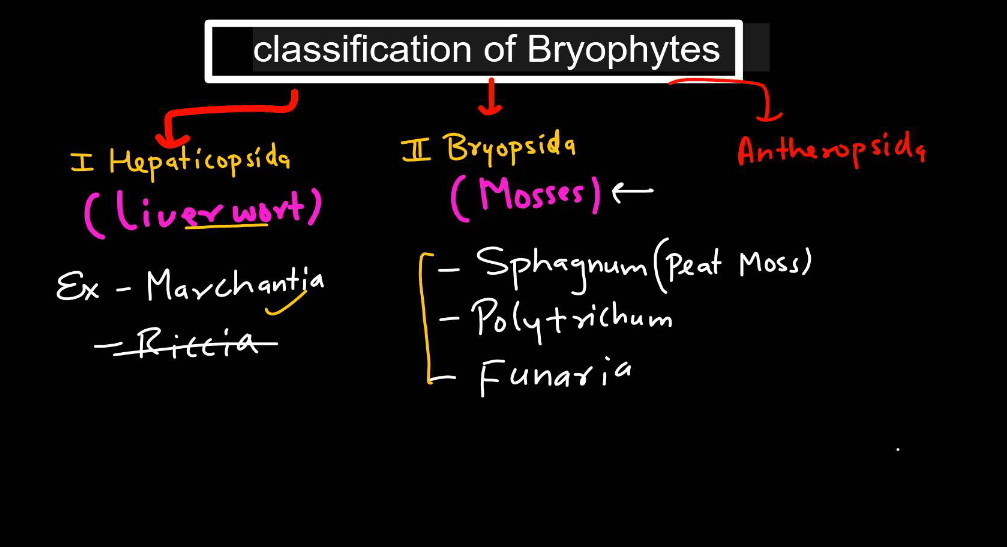
Bryopsida (Mosses)
Mosses also known as Bryopsida are small, simple plants that don’t have true roots, stems, or flowers. They typically grow in damp, shady places like forests, marshes, and on rocks. Mosses reproduce by spores, which are tiny reproductive cells. They have leaf-like structures called gametophytes that absorb water and nutrients from their surroundings. Mosses play important roles in the environment, such as preventing soil erosion and providing habitats for small creatures. They don’t require much sunlight to grow and can tolerate harsh conditions, making them resilient plants. Despite their small size and simple structure, mosses are crucial contributors to the ecosystems they inhabit.

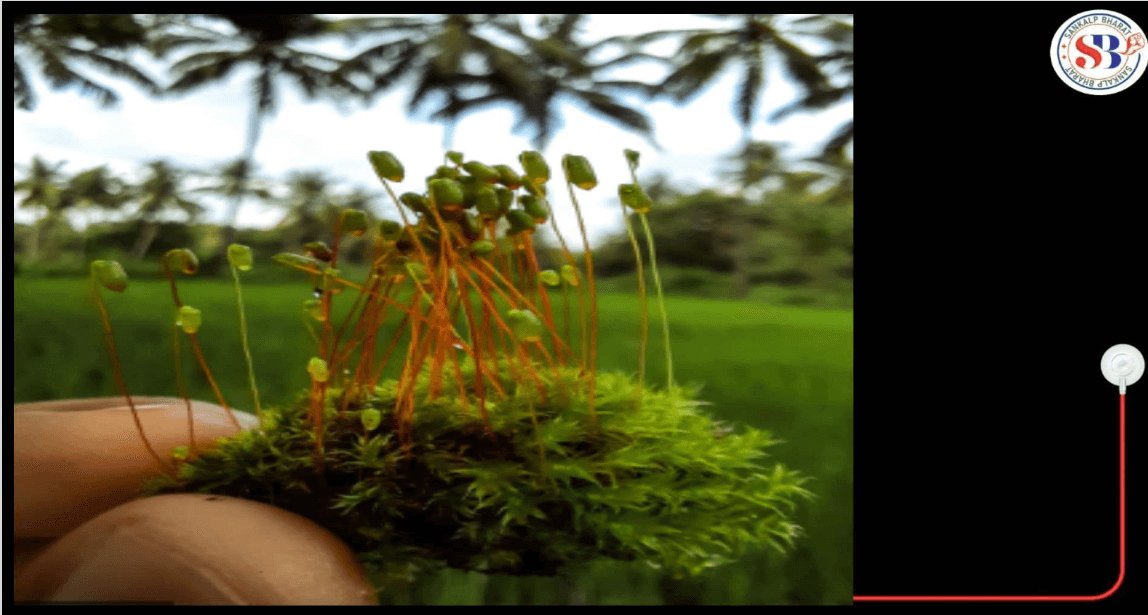
Types of Mosses (Bryopsida)
Bryopsida Or Mosses are further divided into 5 orders namely:
- Bryales
- Andreales
- Sphagnales
- Polytrichales
- Buxbaumiales
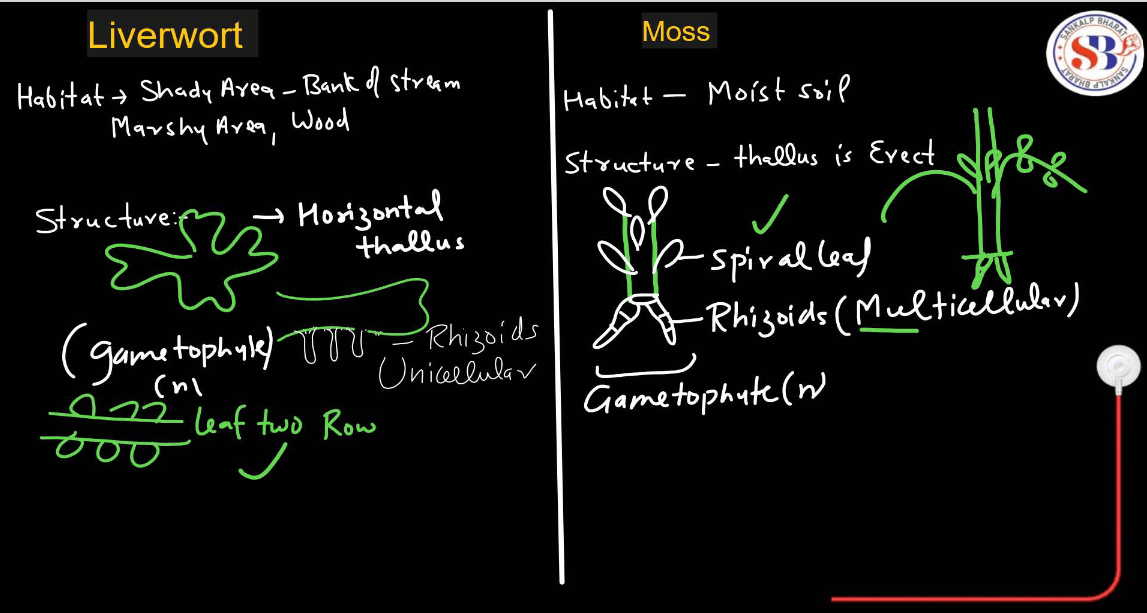
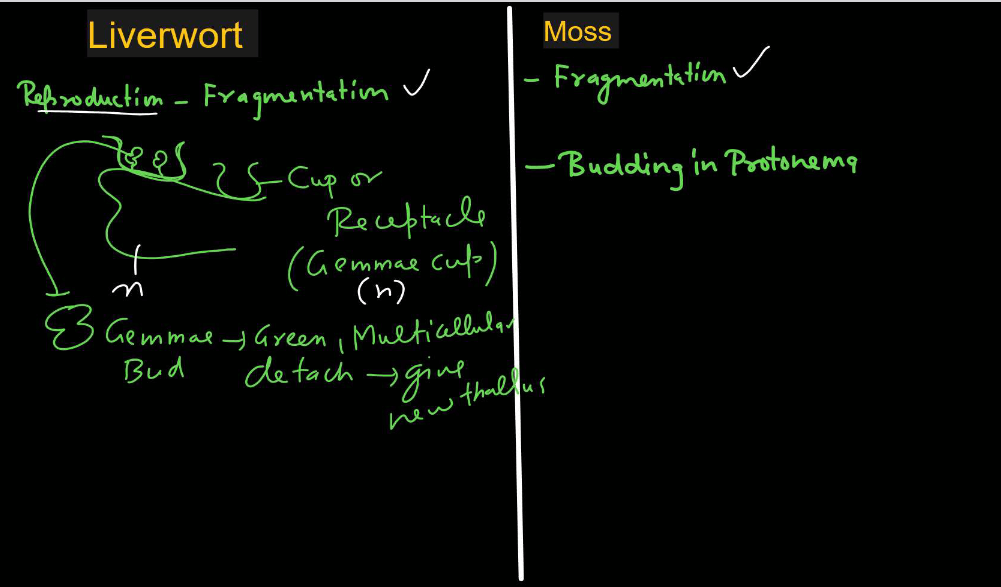
Hepaticopsida (Liverworts)
Liverworts are small, simple plants that grow, in damp places like soil, rock, and tree trunks. They don’t have roots, stems, or leaves like other plants; instead, they have thin, ribbon-like structures. Liverworts reproduce through spores, which are tiny particles released into the air. These spores can develop new liverwort plants under the right conditions. Liverworts play a vital role in ecosystems by helping to break down organic matter and providing habitats for small creatures like insects and mites.
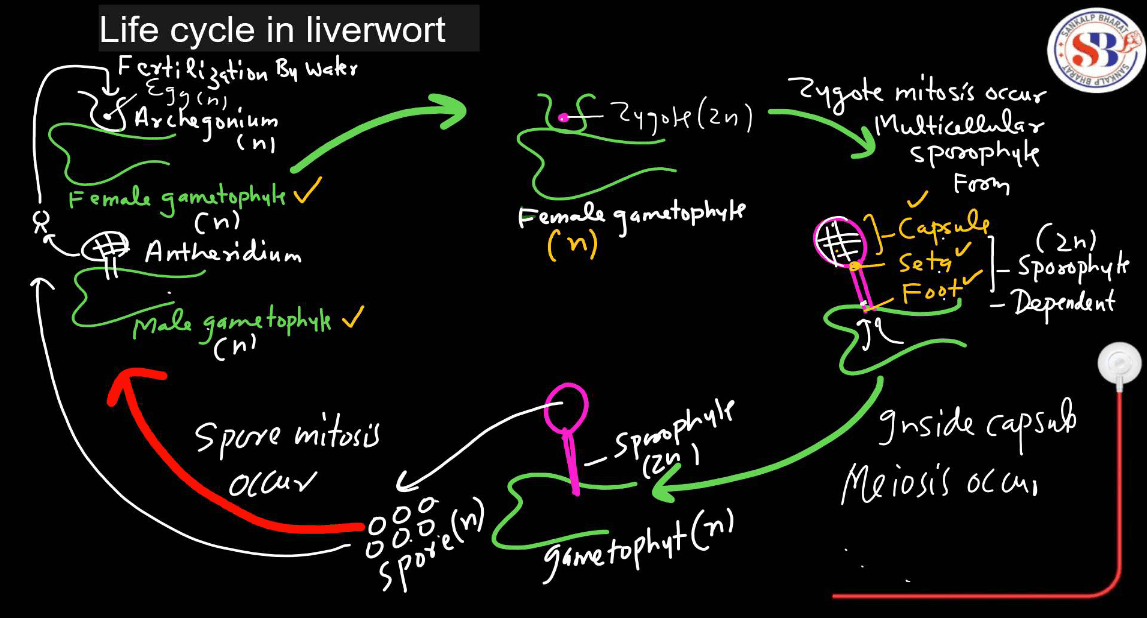
Types of Liverworts
- Marchantiales (e.g. Riccia)
- Sphaerocarpales (e.g. Sphaerocarpos)
- Calobryales (e.g. Calobryum)
- Jungermanniales (e.g. Pellia)
Anthocerotopsida (Hornworts)
Hornworts or Arthocerotopsida are another type of small plant plant that often grows alongside liverworts in damp environments. They have a unique horn-shaped structure, which gives them their name. like liverworts, hornworts lack true roots, stems, and leaves. Instead, they have a flattened thallus and sporophyte structures. Hornworts reproduce through sporangia located on their sporophyte structures. These plants are essential for soil health and ecosystem balance, contributing to nutrient cycling and providing habitats for various organisms.
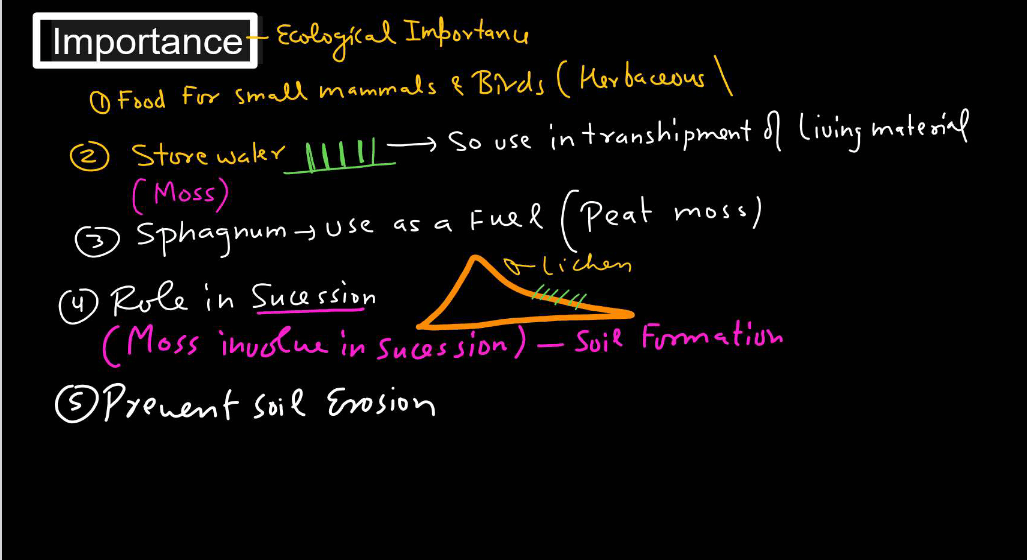
To learn more about the Bryophytes Class 11, Watch the complete video

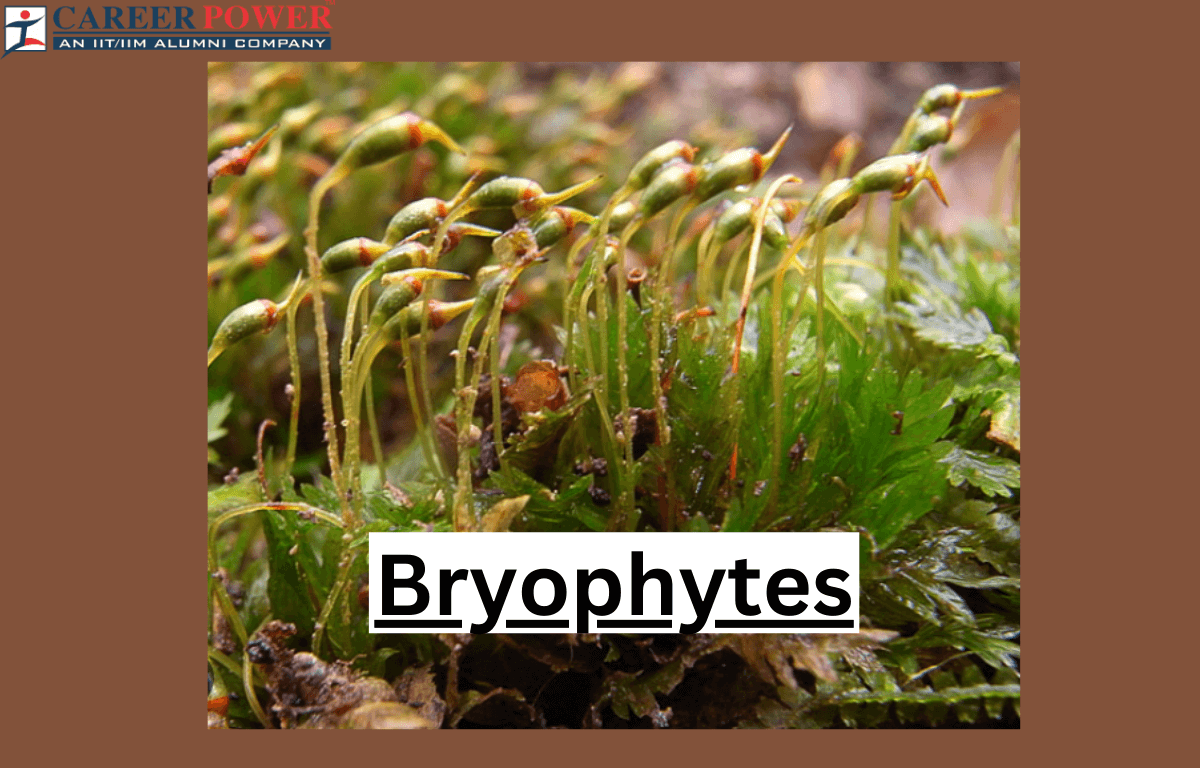

 50 Vegetables Name for Kids in English a...
50 Vegetables Name for Kids in English a...
 Food Chain: Definition, Types, Examples,...
Food Chain: Definition, Types, Examples,...
 Human Respiratory System: Definition, Di...
Human Respiratory System: Definition, Di...













